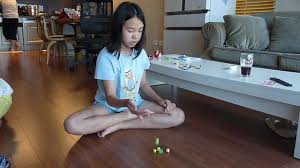Traditional Games & Sports of Korea
Traditional games of Korea have the influence of culture, history and environment of Korean Peninsula and they have originated from folk beliefs.
People of Korea have enjoyed games with family and friends throughout history and the games create a sense of community.
Most games are played with the hands using movement , and do not require a play area or equipment. The names and rules of the games differ by region.
Ssireum ( Wrestling)
It is similar to Japanese Sumo wrestling. Ssireum is a contest of strength and technique - a form of wrestling unique to Korea. Traditionally it is practiced as combat and self defense.
Yutnori
Yutnori, a board dice with four wooden sticks, is one of the most popular traditional games of Korea. It is usually played on the first day of new year by two players or teams.
 |
| Courtesy : youtube.com |
Kite Flying
Kite flying is a traditional winter game for children and adults. There is a period of kite flying after which the kite string is cut for it to fly away. Kites are generally flown as distraction from winter cold.
Top Spinning
Top spinning is generally played by children. In this a player spins a wooden top with a stick to make it spin on ice or ground. The best tops are heavy with strong tips. They are often spun in groups.
Tuho
Tuho players attempt to throw arrows into the top of a narrow-necked wooden jar. The score is determined by number of arrows thrown in the jar. Originally this game was popular among royal families and upper class but now it is played by people from all classes.
 |
| Courtesy : youtube.com |
Neolttwigi
This game is Korean seesaw. Rather than sitting at each end, neolttwigi participants stand and jump launching their partner into the air on the opposite side. The game is popular among girls.
Gonu
In this the game is played with a small pebble or piece of wood and a game board drawn on the ground or piece of paper. Players make their pebble move one block forward, and the player who block's their opponent's pebble wins.
Jegichagi
Jegichagi is similar to western Hacky Sack. Players kick a jegi and the players with greatest number of kicks wins.
Gonggi
Gonggi is a popular Korean children's game. It is traditionally played using five or more small grape-sized pebbles. It can be played alone or with friends. The game can be played by anyone almost anywhere as only a few stones and a flat surface are needed for play. The same game is known as 'gatti' in Nepal.
 |
| Courtesy : youtube.com |
Juldarigi
Juldarigi is a traditional Korean sports similar to Tug of War.
Rolling Hoop
Rolling Hoop is also one of the Korean traditional games using iron stick. There was a performance using Rolling Hoop in the opening ceremony of 1988 Seoul Olympics.









